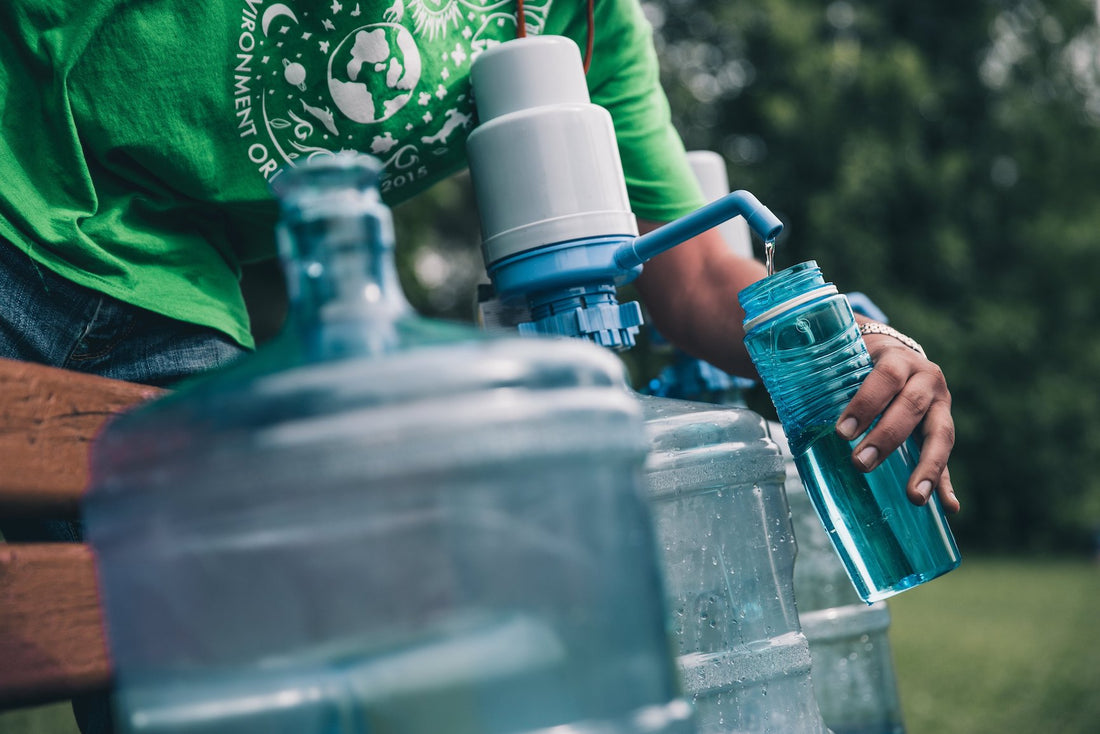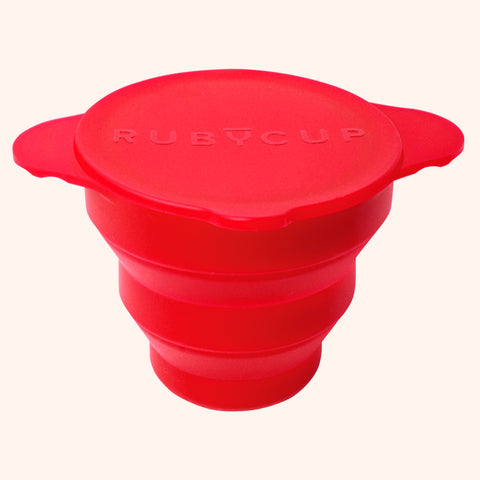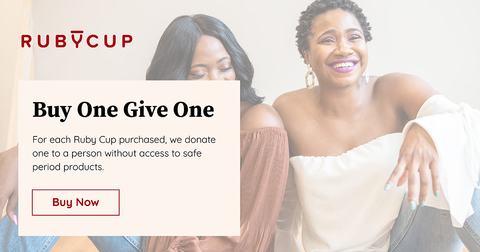Let’s say you’re traveling around South-East Asia and know you’ll get your period during your trip. You’re all set with your Ruby Cup already packed into your backpack and quite smug about how you only have to bring one small period product vs. a toiletry bag full of disposables period products.
But then you stop dead in your tracks when you realize: What if you’re in a place where you’re not sure about the quality of the tap water? Or where there’s no running tap water at all!
Don’t worry, we’re here with the answer to that question so you’ll know exactly how to handle your menstrual cup while traveling.
Rinsing vs. boiling your menstrual cup
First though, we need to set a clear definition of terms. As a menstrual cup user you’ll know that there's two times you'll clean your cup: during your period and before or after your period.
How to clean your menstrual cup during your period:
Rinse your menstrual cup with water before reinserting it again with sanitized hands.
How to clean your menstrual cup before/after your period:
Once a month it’s recommended to disinfecting your menstrual cup by boiling it for 3-5 minutes after or before your period.
Related post: How to clean your menstrual cup
Rinsing your menstrual cup with non-drinking water during your period
As a general rule, remember this: If you’re in a region where it’s not recommended to brush your teeth with the water available, then also make sure you don’t rinse your menstrual cup with that water. Instead, rinse your menstrual cup with bottled water.
If you’re in an area where the tap water is okay for cooking, making tea and brushing your teeth, but it’s still adviced not to drink it, in our experience, then it’s okay to rinse your Ruby Cup with that tap water.
An example from Nairobi: When we visit our team in Kenya, we don’t drink the water from the tap, but when we make tea or coffee, we use regular tap water boiled in the kettle or a pot. Hence we rinse our Ruby Cup during our period under running tap water in Nairobi, and boil it with tap water at the end of our period.
Extra Tip: The Ruby Sterilizer makes it super easy to boil your cup while traveling. It's foldable, making it easy to take with you and uses very little water!
Through our Buy One Give One programme, we’re able to donate Ruby Cups to low-income communities in the Global South. We often get asked how we distribute in areas where water resources are low or the quality of the water is non-potable. The only way to donate menstrual cups responsibly is by partnering with NGOs and partners that can ensure the safe use of Ruby Cup among their workshop participants. That means access to enough water to boil their Ruby Cup at least once a month, and giving thorough training on how to safely use the Ruby Cup.
Important: Don’t rinse your menstrual cup with the tap water in airplane bathrooms. It’s still being debated if the quality of the tap water coming from the tanks has drinking water quality. A study by the Environmental Protection Agency back in 2004 tested the water from 300 planes and “found that 15% of the samples contained the bacteria coliform,” as the Time Magazine writes. So just to be on the safe side, we’d recommend not to rinse it there.
Can I use wet wipes instead of rinsing the menstrual cup in water?
That is up to you, but we recommend to keep the following in mind:
– Make sure they’re flushable. If they’re not, they don’t break down and will cause serious blockages in the sewer system.
– If you don’t have flushable wipes or you’re not sure if they are, always dispose of them in the bin.
– Double-check the ingredients and make sure there’s nothing in there that will wreak havoc in your vagina’s ph-levels or that could cause burning or irritation when reinserting the menstrual cup again.
Disinfecting your menstrual cup after your period with non-portable drinking water
Apply the same rule: if it’s not recommended to brush your teeth with the water, make sure not to boil your cup with that water. Play it safe by boiling your menstrual cup in drinking water from a water bottle.
Milton tablets, alcohol wipes and other chemicals to disinfect the cup at the end of the period.
It is not necessary to use anything else to disinfect your Ruby Cup than boiling it for 3-5 minutes in clean water. We usually don’t recommend additional cleaning with some of the chemicals mentioned above, as they can be harsh on the medical grade silicone as well as the environment.
We also want to remind you that you don’t have to boil your menstrual cup immediately after your period is over. Simply boil it in bottled water at the next best opportunity. And if the next best opportunity is two weeks from then in the comfort of your home, that’s also fine. Simply rinse your cup and store it in the cotton pouch until you get home.
Conclusion: should you or shouldn’t you rinse and boil your menstrual cup in non-drinking tap water?
1.) It’s better to be safe than sorry: boil and rinse your Ruby Cup with bottled water when you’re not sure about the quality of the tap water.
2.) If you don’t have a running water tap or a water bottle with you, you can also simply reinsert your Ruby Cup without rinsing it. Rinse it with bottled water at the next best opportunity.
3.) When using other materials to disinfect or clean your period cup during or after your period, such as wet wipes, make sure to check the ingredients and how you dispose of them.
 Your Account
Accedi
Your Account
Accedi
 Basket
Basket




